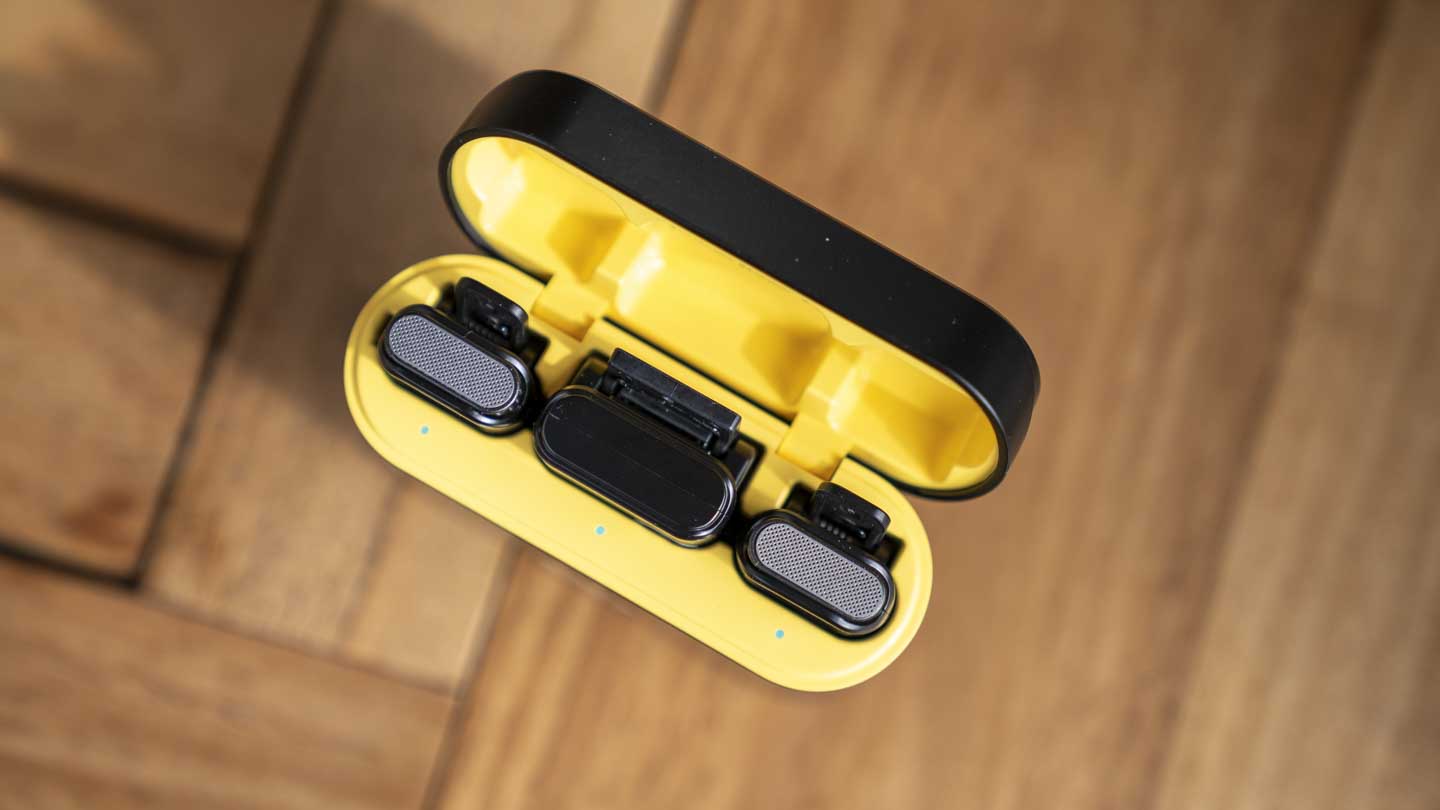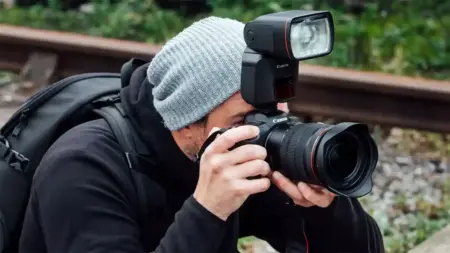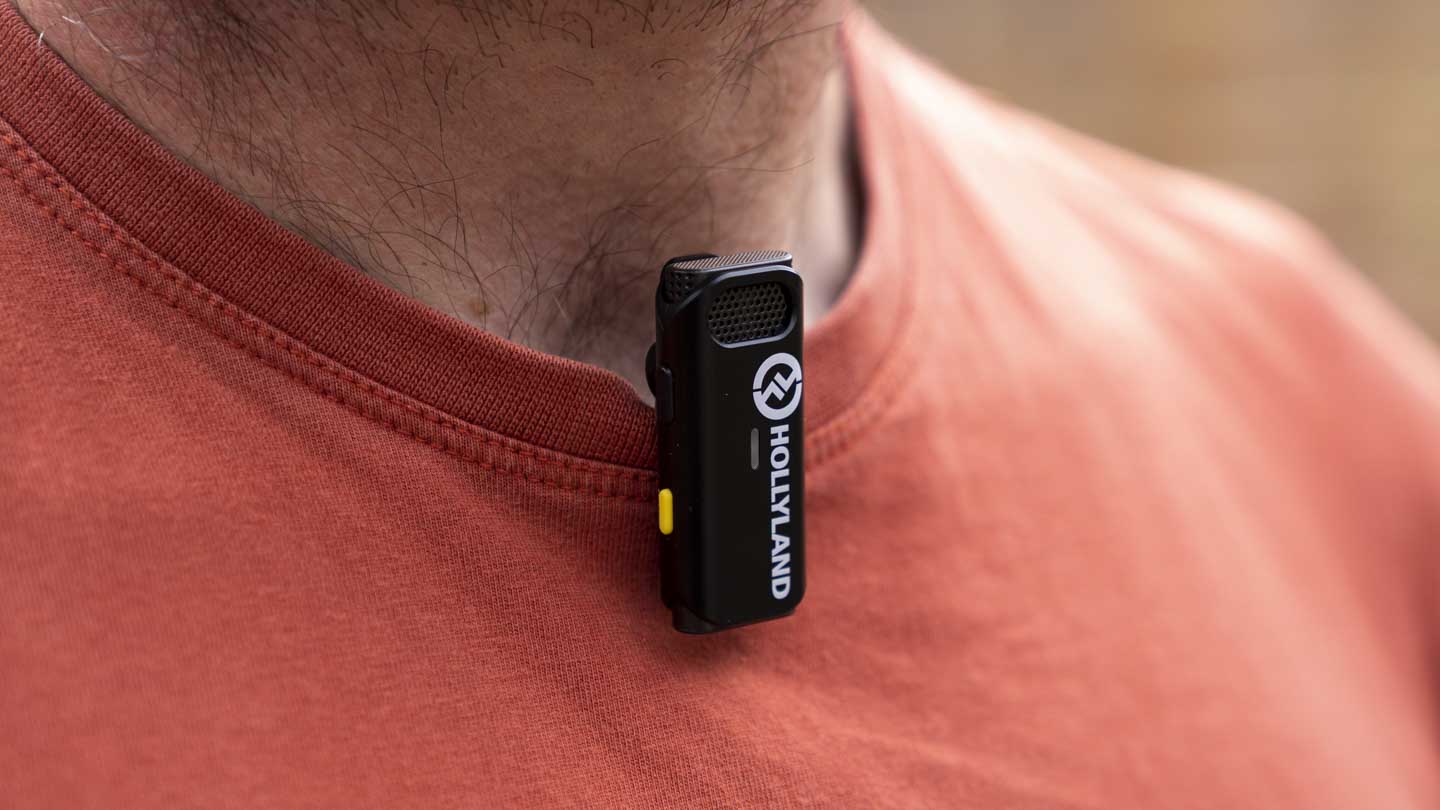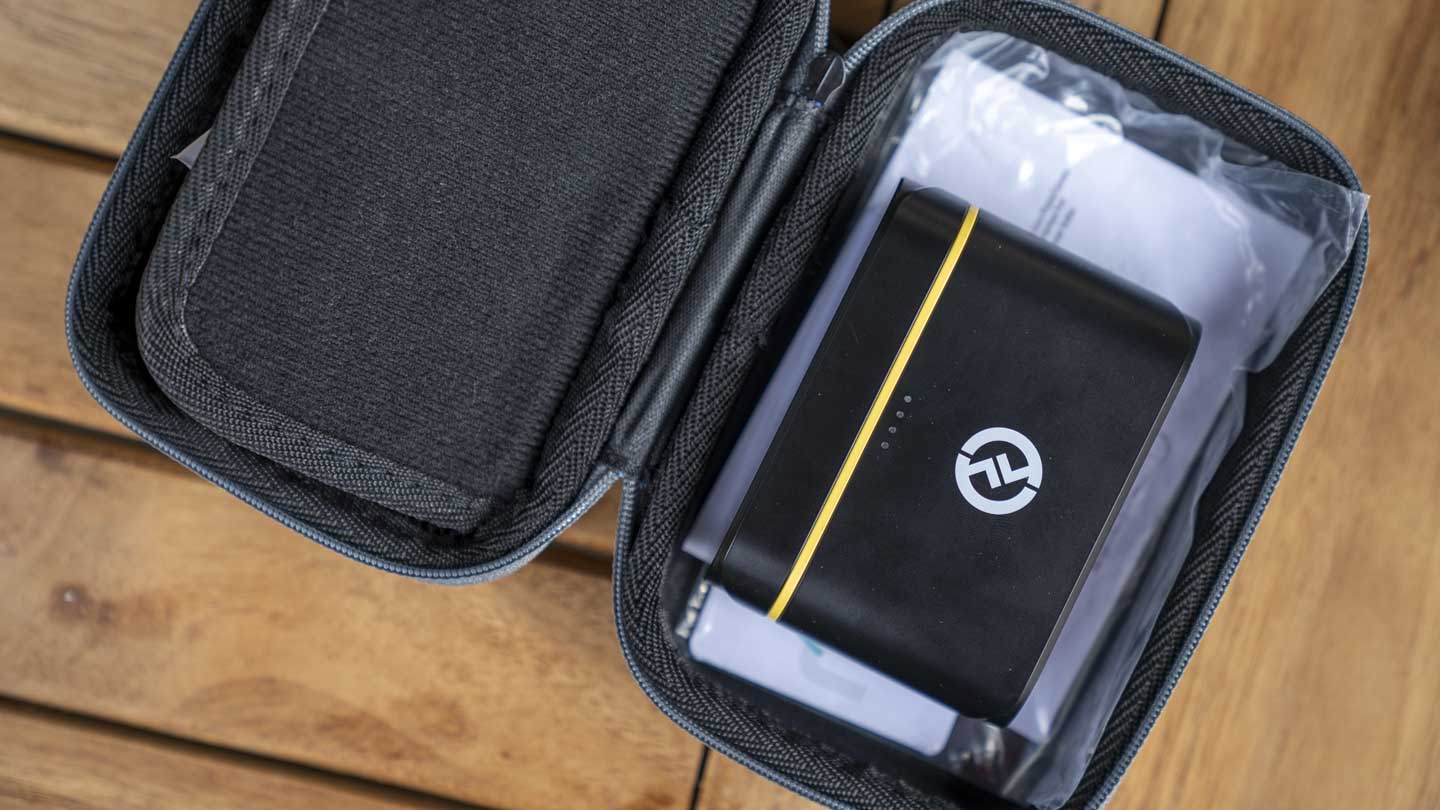There are three main parts to the Hollyland Lark M1. The charger case, the receiver and two identical transmitter mics.
Starting with the charger case, the design is simple and matches many of the device charger cases I have seen in the last few months. However, it’s unusual to see one provided by the manufacturer and not by a third party, which is a nice touch. The odd thing is that while I like the design of the transmitter mics and receiver, which are all very compact and elegant, the charging case is a little bland.
The case does what it does, and that’s it; there’s no real product design that makes you feel like you’re buying something desirable; it’s just a functional bit of hardware. To that end, it is a charging case that holds the three components and gives them a boosting charge when in your kit bag and between shoots.
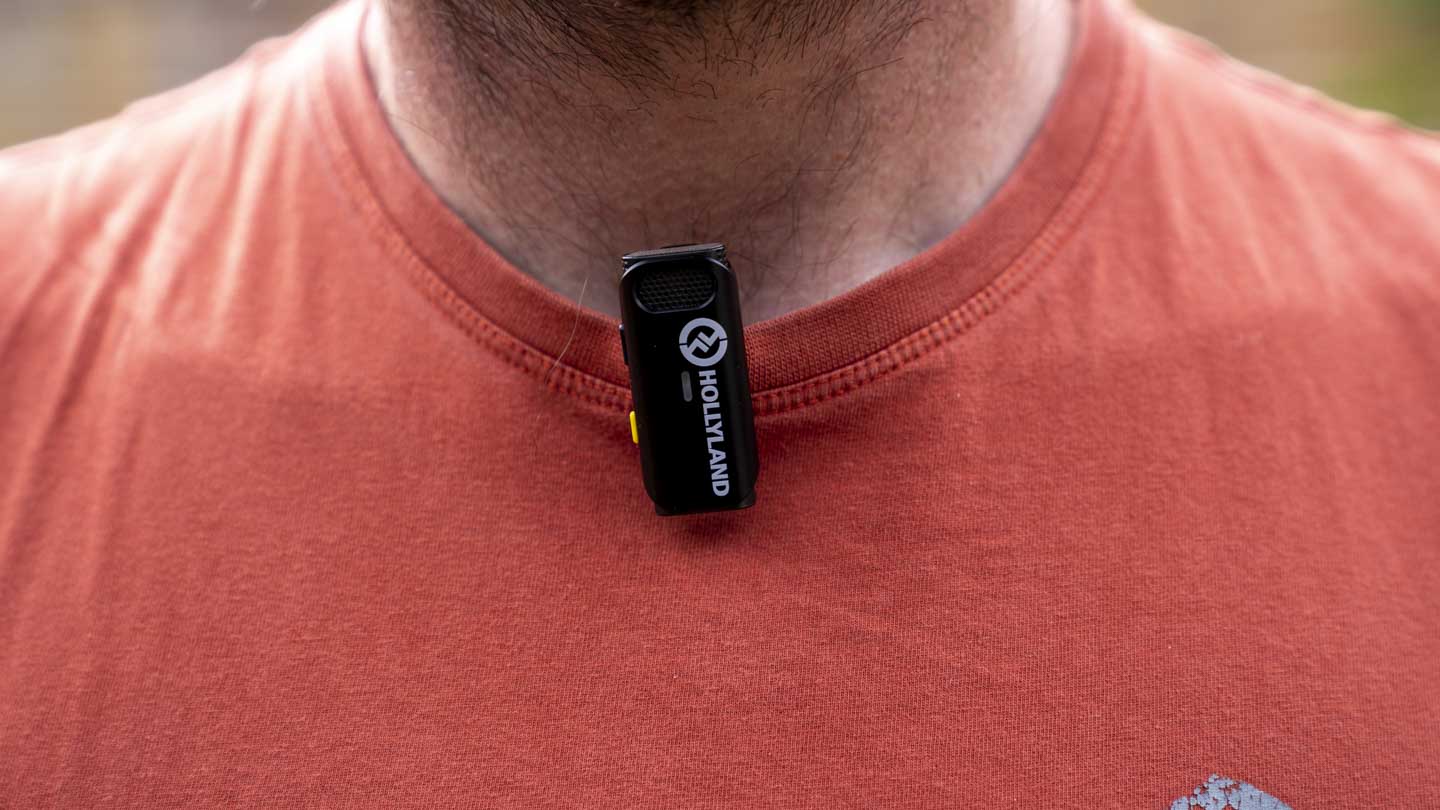
On the front of the case are four small lights that tell you how much charge is left, and inside there are three slots to take the transmitters and receiver. The case design is functional rather than aesthetic.
Next, is the receiver, which is very nicely designed in contrast to the case. I’ll point out at this point that the transmitters and receivers are simple, so there isn’t the huge depth of features such as channel, group selection and fine volume adjustment as you would expect with a professional outfit. What you get will enable you to get up and running quickly.
The receiver is nice and simple, with a 3.5mm audio out that links directly into your camera. There is no on-device audio monitoring, so headphones must be plugged directly into your camera.
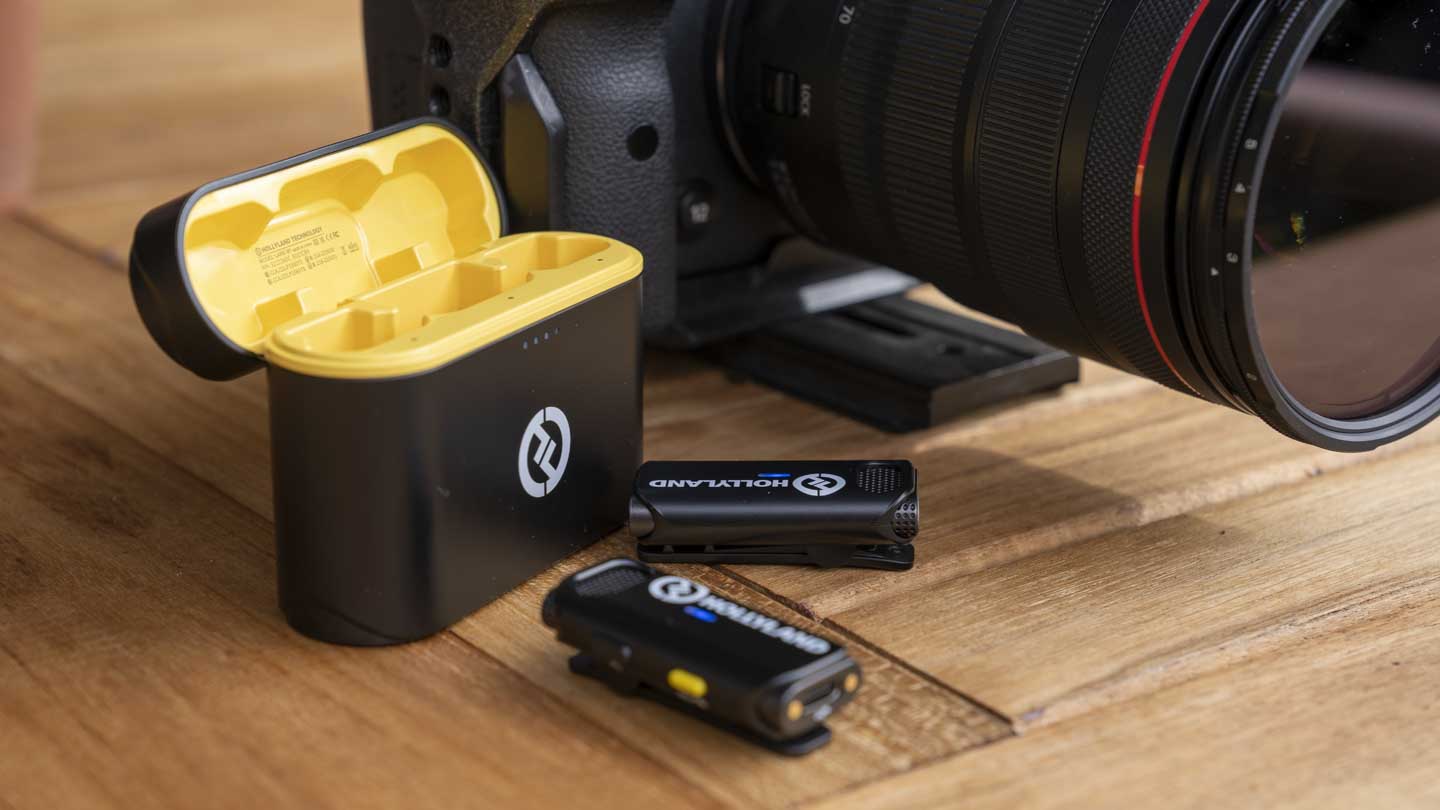
Once slotted into the camera’s hotshoe, the two lights on top will initially flash blue until they connect with one or both of the transmitters. Once that’s done and the lights turn solid, you’re ready to go.
Along one side of the receiver is the USB Type-C charging port if you don’t have the charging case. Then you have two dual-use buttons; one takes the volume up and the other volume down; the other use for these is that the first is used when manually pairing, and the second is for switching between mono and stereo modes. I’ll come on to the use of these in the performance section.
On the opposite side are the 3.5mm jack and the power button, and the two contacts for the charging case are on the bottom. The unit’s design is small and features a clip on the underside enabling the receiver to be clipped easily to a cable or slipped into the camera’s hotshoe. It’s all very well considered.

Taking a look at the transmitter, and again the approach is simple, with the small clip enabling you to clip the mic to a lapel easily. The unit’s design is small, but Hollyland has printed its logo across the unit in large white letters. It looks great, but inevitably a small length of electrical tape quickly covers the logo making the unit far more discreet!
On top is the mic mesh with another on the front to ensure a good audio pickup from whoever it’s been clipped to, in the box are wind jammers that easily clip on and off when needed. On the side is the power button, and below this is a dual-use pair and noise-cancelling on/off button. On the base is a USB Type-C port for charging; again, if you don’t have the charging case, that’s it. A quick Look through the list of accessories, and it doesn’t look like this USB port would accept a lavalier mic, say if you did want something a little more descrete on your collar than a logo emblazoned Lark M1.
